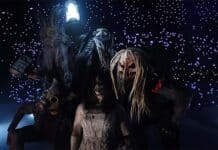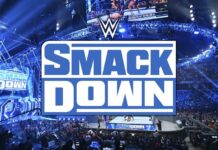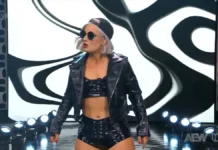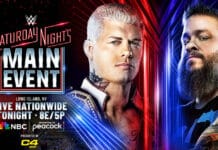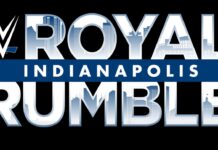Nearly two decades after Extreme Championship Wrestling, the South Philadelphia-based promotion that helped revolutionized the presentation of the sports entertainment industry in the late-90s, closed its door, there remains a mystic around the wild organization that built an enduring legacy through a combination of violence and passion. Prior to the official bankruptcy in April of 2001, the renegade group promoted a fast-paced, physical style with a cast of intriguing characters that allowed it to expand from its base in the north east to the national stage among the WWF and WCW. While it put hardcore on the map for a wider audience and often pushed the envelope too far with some of the riskier stunts, ironically, much of the basis for ECW was the use of a classic pro wrestling dynamic, over baby faces that challenge hated heels. It was well-documented that the gritty league ran on a shoe string and eventually collapsed from the pressure of the competition of the industry. Despite the diehard fan base and an influenced that helped mold the future of the major promotions at the time, ECW saw an abrupt end, running its last national card with Guilty As Charged on pay-per-view in January of 2001 before a pair of bought house shows in Pine Bluff, Arkansas a week later.
In the years that followed, the topic of the extreme downfall was often discussed for what caused the shut down and what would’ve happened if the organization found a way to stay afloat, especially after WCW was bought by Vince McMahon for pennies on the dollar just months after ECW folded. The common theme among that discussion was that there was still a demand for the organization that brought dozens of stars national notoriety and ultimately helped fuel the Monday night war. When McMahon bought ECW’s trademarks and assets, including its tape library it allowed for video releases for the main stream audience. The lengthy process took over a year to complete because slices of ownership were sold in the group’s latter stages to keep it on pace with its competition. Reportedly, the now-defunct Acclaim video game company that produced two titles for the organization had a stake in exchange for some of the work on the video games. Supposedly, Pioneer Entertainment, the company that distributed ECW DVDs before the company closed, also had some type of claim in the bankruptcy. Original investor, Tod Gordon, who was fired from the organization after the infamous mole story in 1997, attempted to claim rights to the Eastern Championship Wrestling footage, but it was dismissed.
Finally, with all the trademark hurdles cleared, the WWE’s state-of-the-art production staff released “The Rise and Fall of ECW” DVD set in late-2004, which was an intriguing and fair look at the seven-year run of the company. The documentary became one of the best-selling releases at the time and proved the demand for the original product. Roughly six months later, the legendary One Night Stand was one of the most anticipated pay-per-views of that era and its success led to the infamous relaunch in 2006.
However, there was another aspect to the ECW nostalgia that same weekend, the Hardcore Homecoming event, a card held at the former bingo hall in Philadelphia and promoted by former heavyweight champion, Shane Douglas. In conjunction with the project, longtime backstage figure, Jeremy Borash produced “Forever Hardcore,” a documentary that featured former ECW grapplers that weren’t under WWE contract or featured in the Rise and Fall production. Similar to the ONS event in New York at the Hammerstein Ballroom, there was a massive demand for Douglas’ event at the ECW arena, promoting a sellout of over 1,200 fans at the bingo hall.
The card held on June 10, 2005, just two days before the ONS event, and while not broadcasted on PPV, (stream was still very limited for wrestling at the time) the show was later released on DVD with wide distribution online and in retail stores through the now-defunct Big Vision Entertainment group, which had a role in the XPW and Wrestling Society X projects. The show itself garnered mixed reviews, as some of the most well-known talent from the original ECW were unable to appear at Hardcore Homecoming because they were under WWE contract, and other extreme originals weren’t necessarily as crisp in the ring as they were in their prime. Still, the event was generally considered a fun event that had some memorable moments, including a surprise appearance by Mick Foley in the main event, which turned into an impromptu barbed wire match.
Following the success of both nostalgia shows, there were rumblings about Hardcore Homecoming as a promotion that ran events on a regular basis. The infamous Extreme Rising organization under Steve O’Neil actually tried something similar years later and the whole venture was a total disaster. However, just a few months after Hardcore Homecoming, a weekend tour was scheduled with three events in Cleveland, Pittsburgh, and Buffalo. The event in Buffalo was subsequently cancelled because of some type of licensing problem and wasn’t exactly a good sign for any type of further expansion.
This week actually marks 14 years since that Hardcore Homecoming event in Pittsburgh, which I attended and still have mini DV tapes of most of the show, as fans were allowed to bring camcorders into the venue. The show took place at the Golden Dome in Monaca, PA where the November To Remember 1997 pay-per-view was held. The comparison to the initial Hardcore Homecoming event was that this road show was a very fun experience. When our crew of wrestling fans arrived at the building, we saw fans lined up outside and there was nearly an hour of everyone enjoying the atmosphere since there was a delay in the doors opening for the show. These pre-show shenanigans included New Jack showing up to visit the crowd before he picked up a small child and pretended that he was going to run into the building with him. Thankfully, the former ECW tag team champion returned the youngster to his family. There was also a bizarre and hilarious incident that saw a probably intoxicated Sandman reject a high five from a definitely intoxicated fan. The fan was later denied entry into the venue because he stumbled into a group of other fans and tried to start an altercation with them. I was under 21 at the time so I had to politely decline a beer that was offered to me from a fellow fan, but I still appreciated his generosity before the show.
As mentioned, the event itself was very fun, despite some less-than-stellar or recycled matches. The problems for the extreme tour were apparent when we reached the entrance, as we were offered a free ticket upgrade from our $25 general admission seats to the second row of floor seats that were originally on sale for $100, a price based on the Hardcore Homecoming production in June. The reason we were offered this free upgrade is because those expensive floor seats simply hadn’t sold and organizers didn’t want empty sets of camera. The main problem with this is that management priced these tickets as if it was an ECW arena type of show, but Pittsburgh was clearly the B-show of that weekend. For example, The Dudleys, who hadn’t debuted for TNA yet, were still fresh off of their WWE deals and were scheduled for the show in Cleveland the previous night, but weren’t booked for the Golden Dome. Former champions, Rhino and Raven also worked the Ohio event, but weren’t scheduled for Pittsburgh. Furthermore, the argument could be made that there wasn’t enough star power to justify higher ticket prices for the tour because names like Terry Funk, Too Cold Scorpio, and Mikey Whipwreck were involved at the ECW arena show, but not booked for any of the tour.
Basically, the Golden dome was more or less a house show card with pay-per-view ticket prices. There’s nothing wrong with a house show loop to compliment the major events, but the ticket prices were unrealistic. While it made for a fun live experience with “Enter Sandman” blaring through the venue while he posed around the building, Sabu performing the triple jump moonsault, and the other chaos, there wasn’t necessarily anything that made the event more than a one-off nostalgic showcase for a live crowd. Some of the matches were carbon copies of the other shows with the same spots. Even if Shane Douglas, who worked for TNA during that era, would’ve been able to get a working agreement with the company to use its talent, Hardcore Homecoming didn’t have the direction or the funding to run a regular promotion.
Still, it was a fun event that was worth the trip to the Golden Dome, including the post-show autograph session for fans that donated to Hurricane Katrina relief efforts. So, Hardcore Homecoming, ECW on Sci-Fi, and Extreme Rising weren’t going to be successful at a relaunch because the things that made the original ECW get off the ground were organic and spontaneous for the audience. However, the draw to the reunion events proved that the company has an impact and a legacy in the history of the industry.
What do you think? Comment below with your thoughts, opinions, feedback and anything else that was raised.
Until next week
-Jim LaMotta
E mail [email protected] | You can follow me on Twitter @jimlamotta

